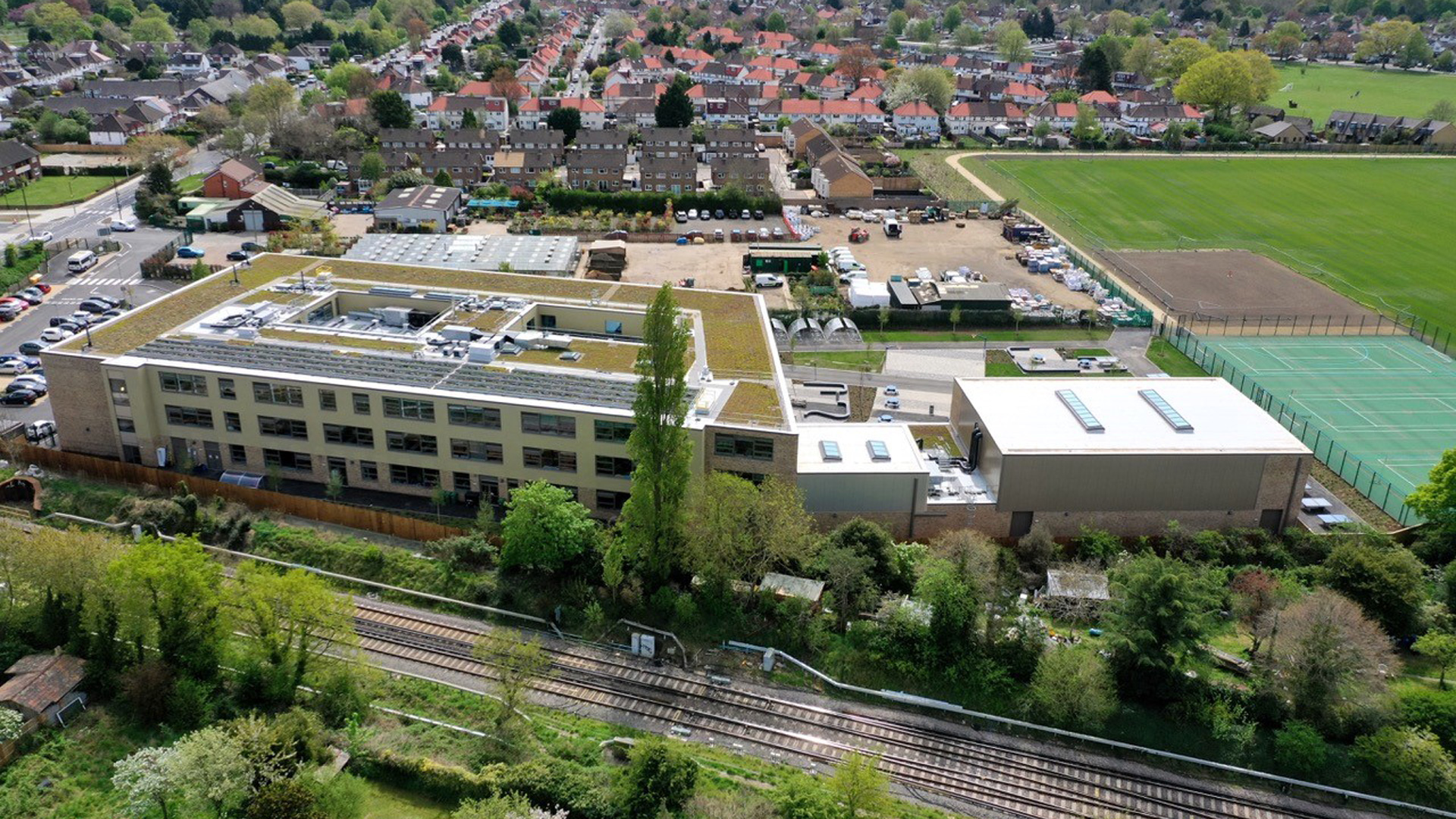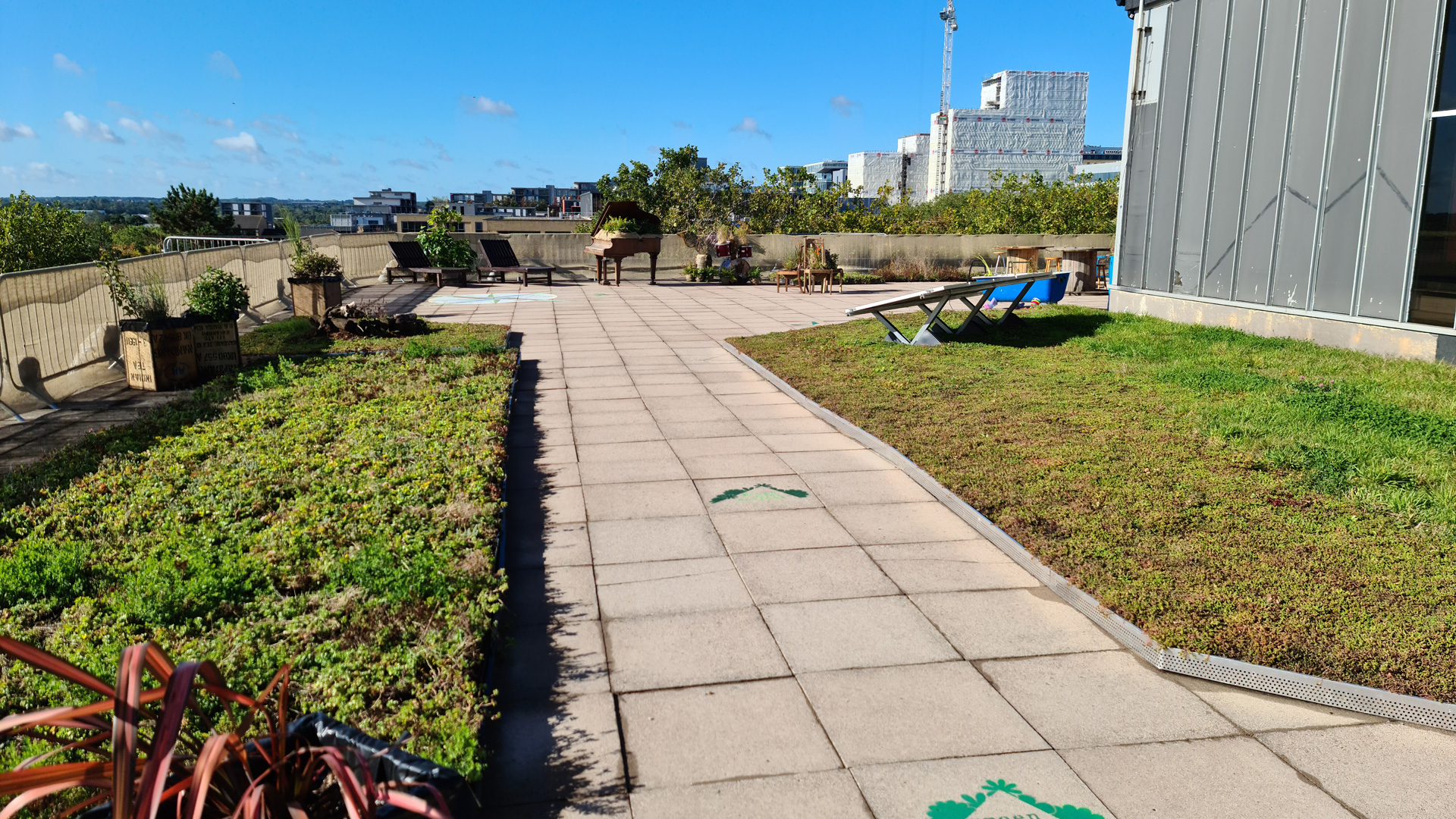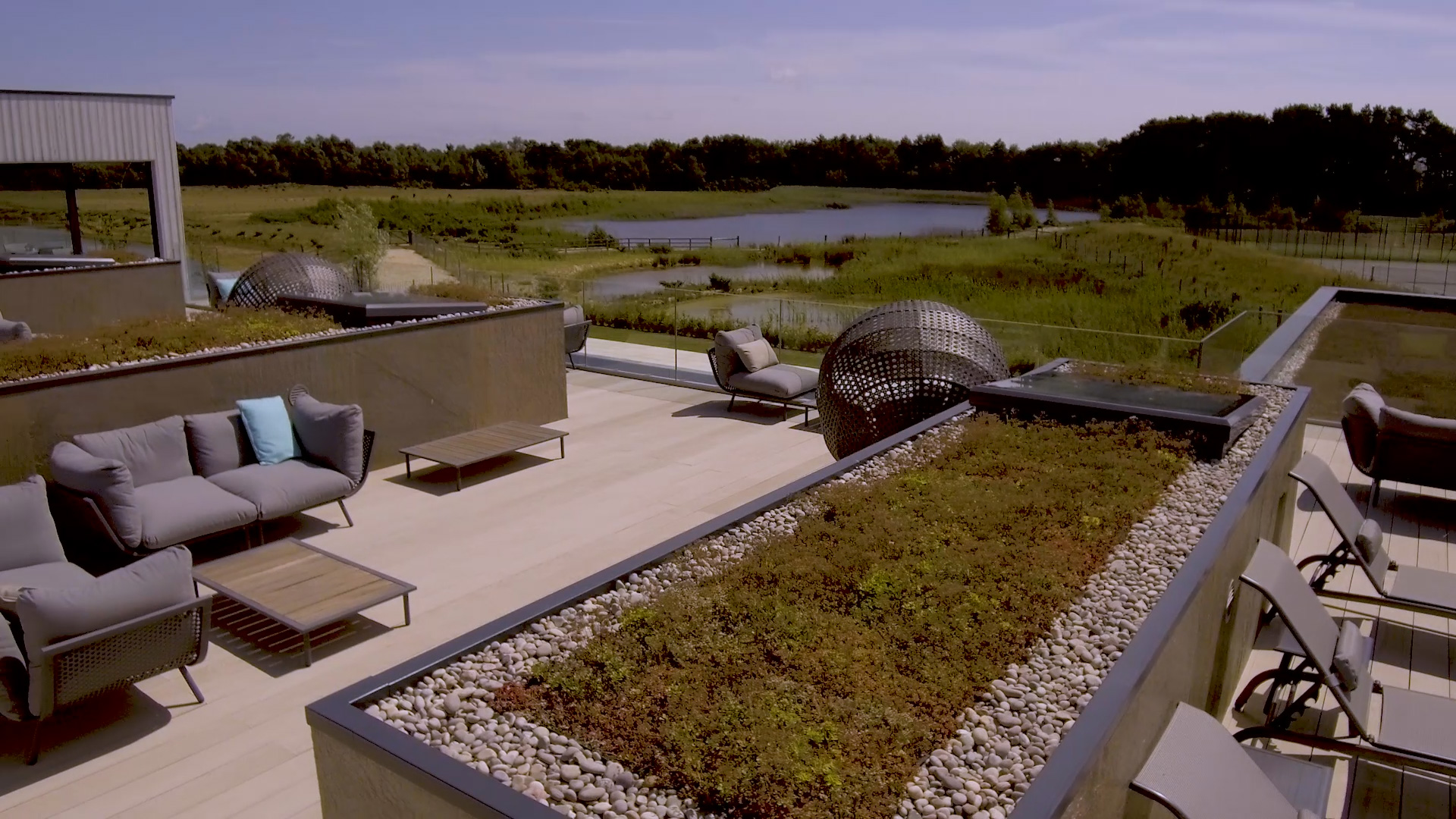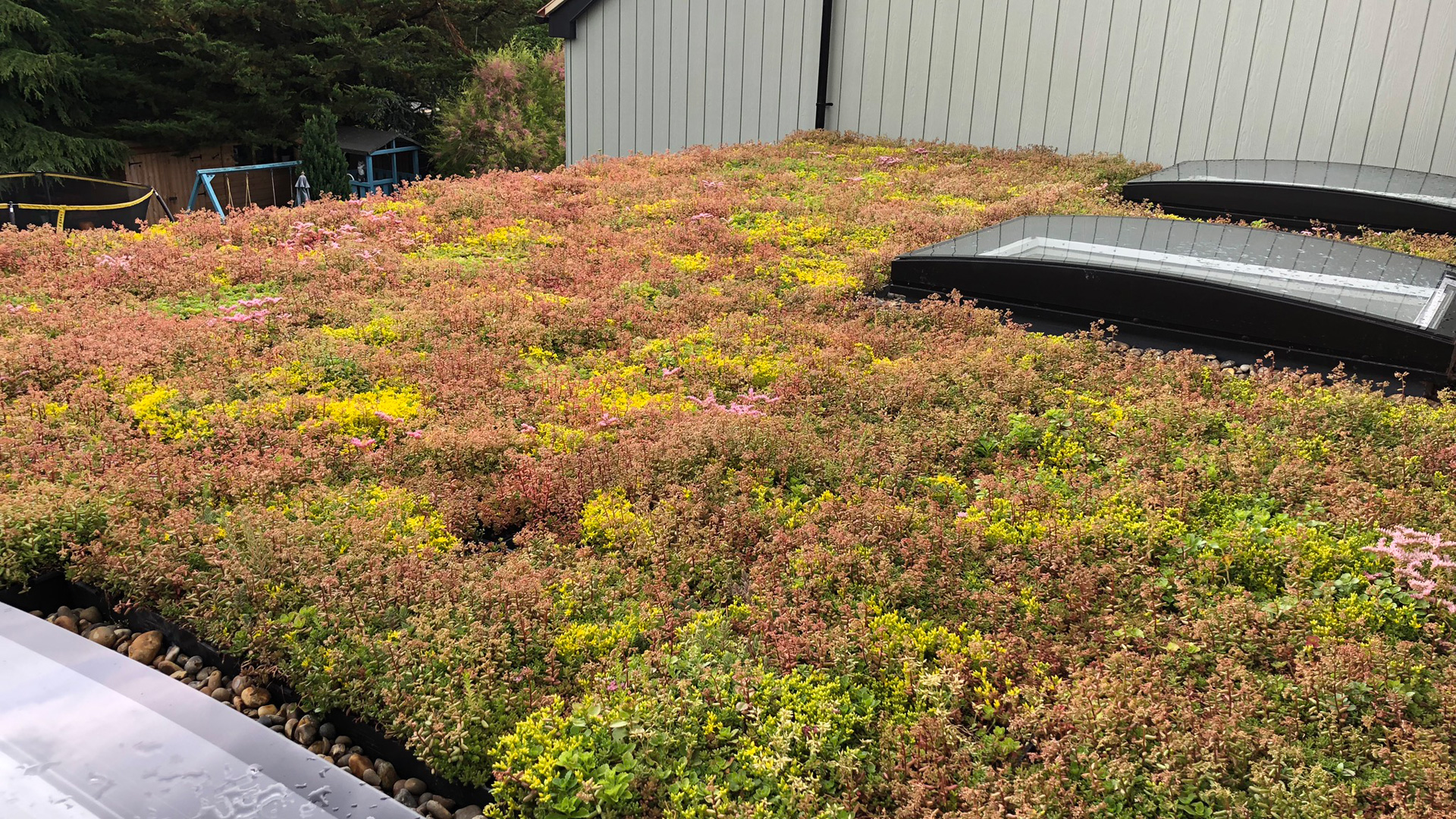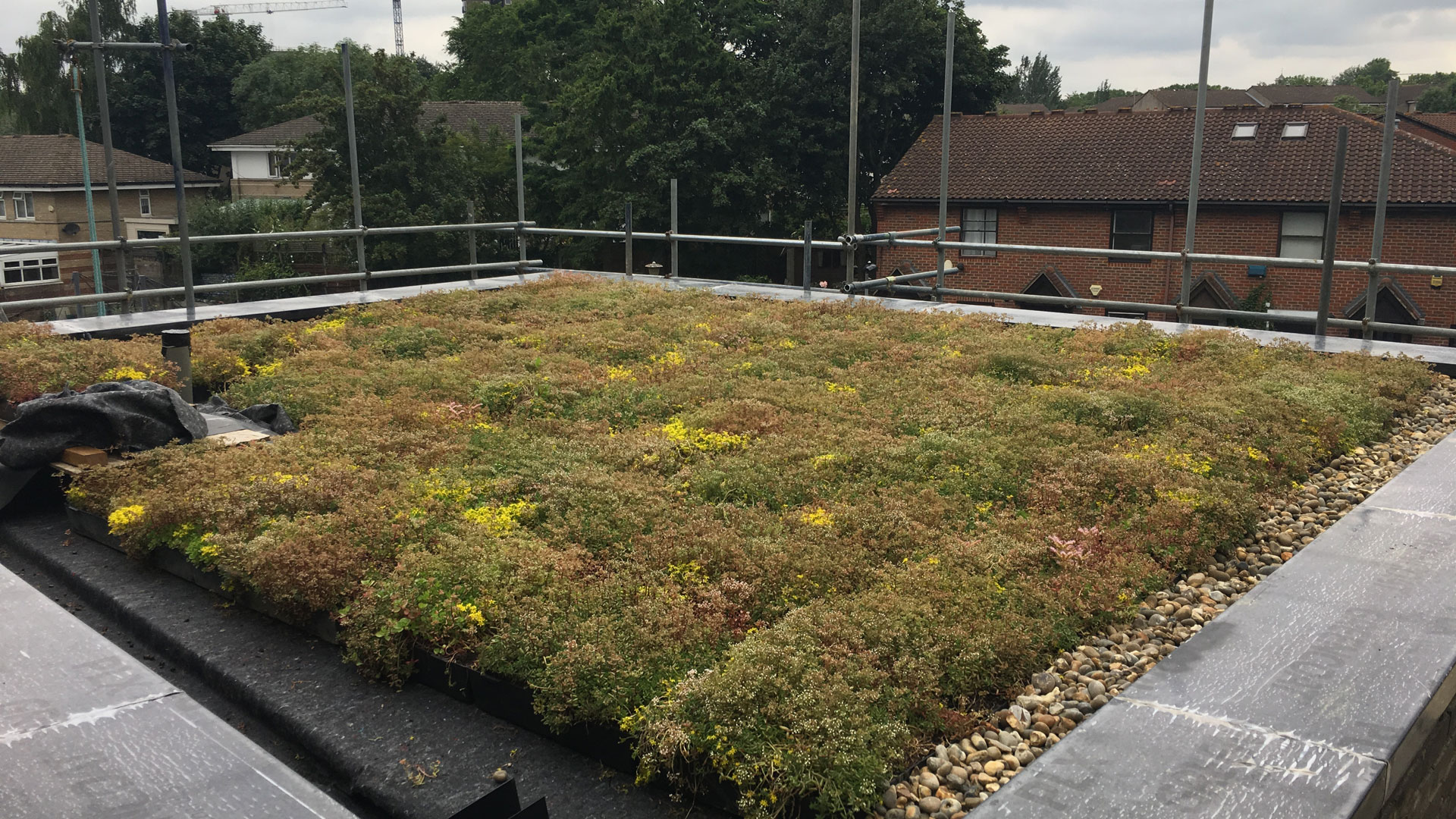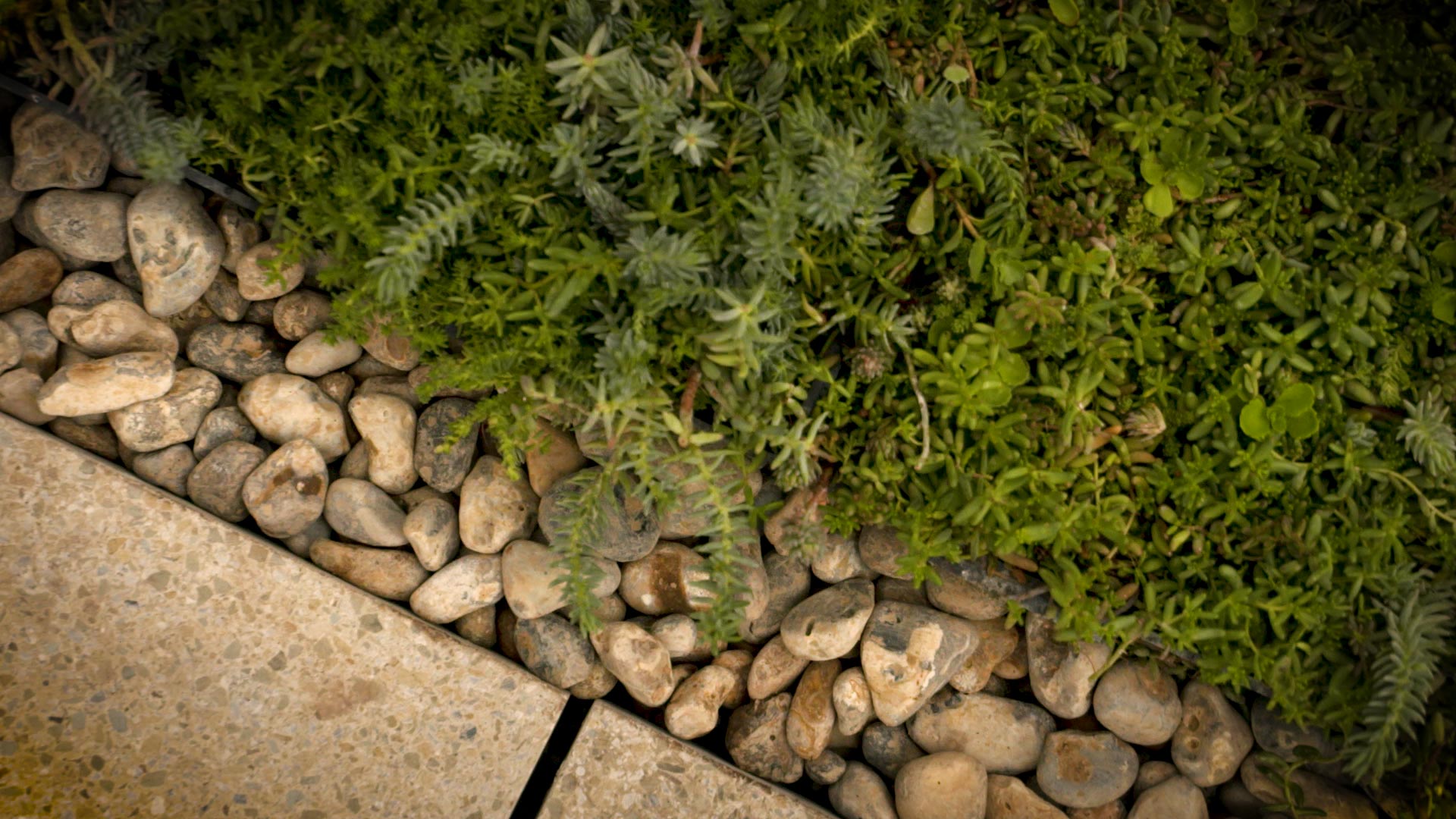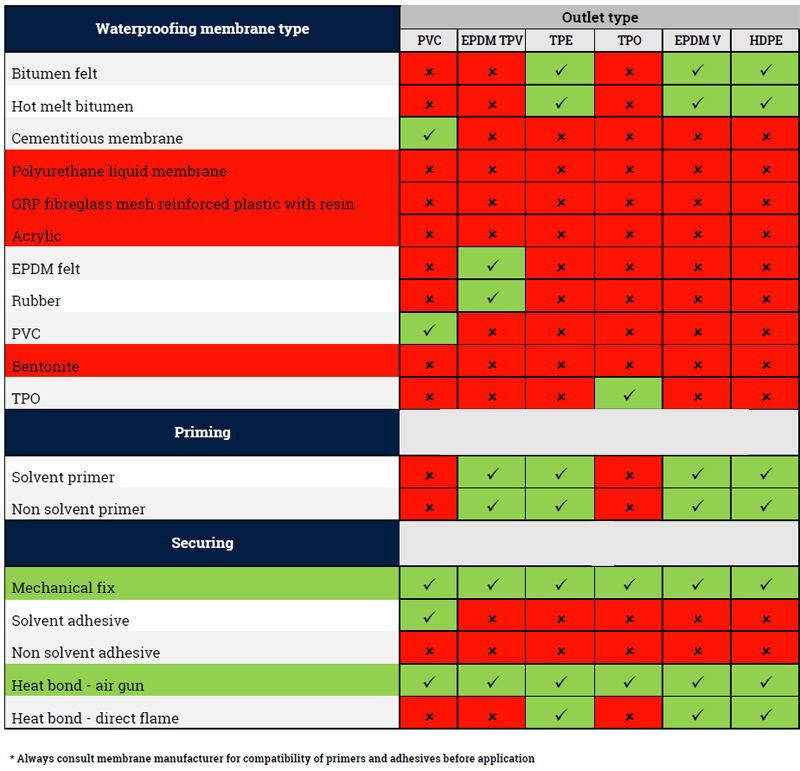Biodiverse roofs and brown roofs are two different things:
- Biodiverse roofs are where seed or plants are introduced into the substrate at the time of construction.
- A brown roof is where the substrate surface is left to self-vegetate from windblown and bird lime seed dispersal.
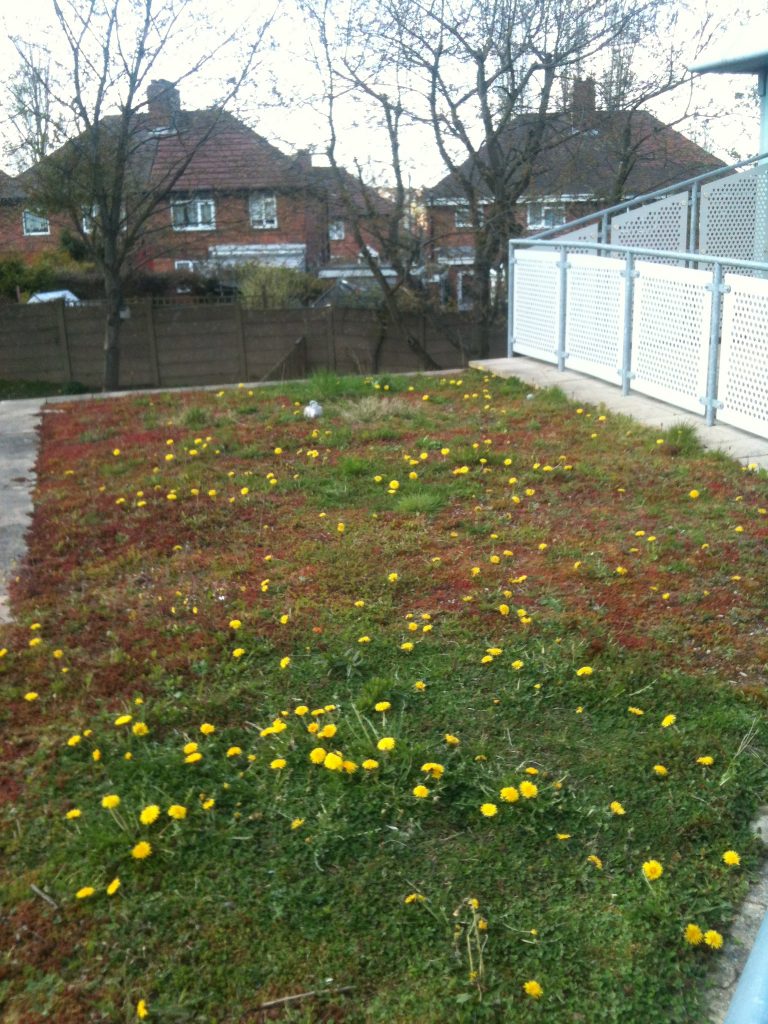
Biodiverse systems have become a popular type of roof garden finish in recent years as they are seen by many planners as a more natural, rugged urban feature and can offer a greater diversity of species as well as prolonged foraging for insects.
The concept of biodiverse roofs is that a plain, low nutrient environment is created at roof level and a small selection of hardy plant species are introduced to give a moderate level of cover and help bind the whole system together.
Then tough, hardy plants will be introduced to the area naturally and start to germinate in the substrate, replicating natural wild urban spaces that are found at ground level.
The substrate level is normally up to 150mm, which offers a medium weight build-up, usually no heavier than 120kg per m2
A cross section of the layered system is below:
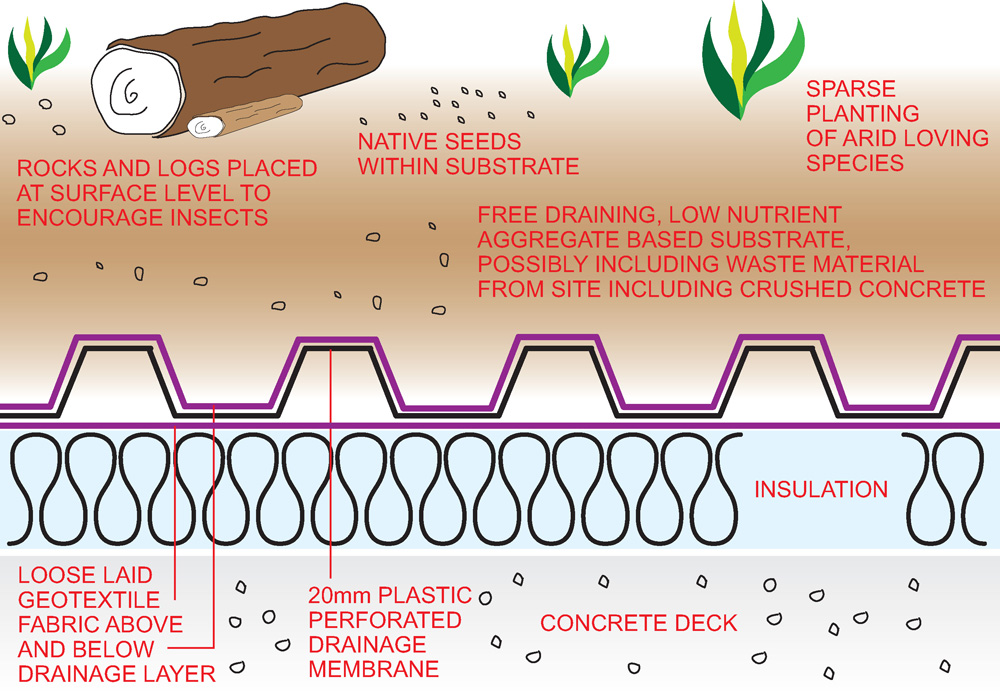
Integrating Wildflower Seeds
Wallbarn uses wildflower seeds that are mixed into the substrate, plug-plants or our new pre-seeded BeeMat (two layers of biodegradable fabric impregnated with wildflower seeds to guarantee an even spread, and to provide an ideal climate for germination).

Biodiverse roofs require fairly little maintenance. They still offer sound acoustic and temperature insulation properties to the building and will help to attenuate water runoff from the rooftop to a significant degree.
Often objects such as rotting tree stumps, stones and rocks can be introduced into the area to encourage insects and other wildlife.
Waste material from the construction process, such as crushed aggregate and concrete, can be introduced into the substrate, adding to a sense of recycling elements of the project.
However, caution must be exercised when using the waste from the site to avoid contaminated material or sharp objects, which could damage the waterproofing being placed onto the roof.
Biodiverse roofs can be used to replicate and replace the ground terrain prior to construction taking place.
Wallbarn M-TRAY can be produced as a biodiverse modular roof system by adapting substrate and vegetation type to suit the project requirements.
Further Information
If you would like any further information regarding the green roofing components available from Wallbarn please give us a call us on 020 8916 2222 or contact us by email or using the live chat facility on here. We will be happy to answer any of your questions.
